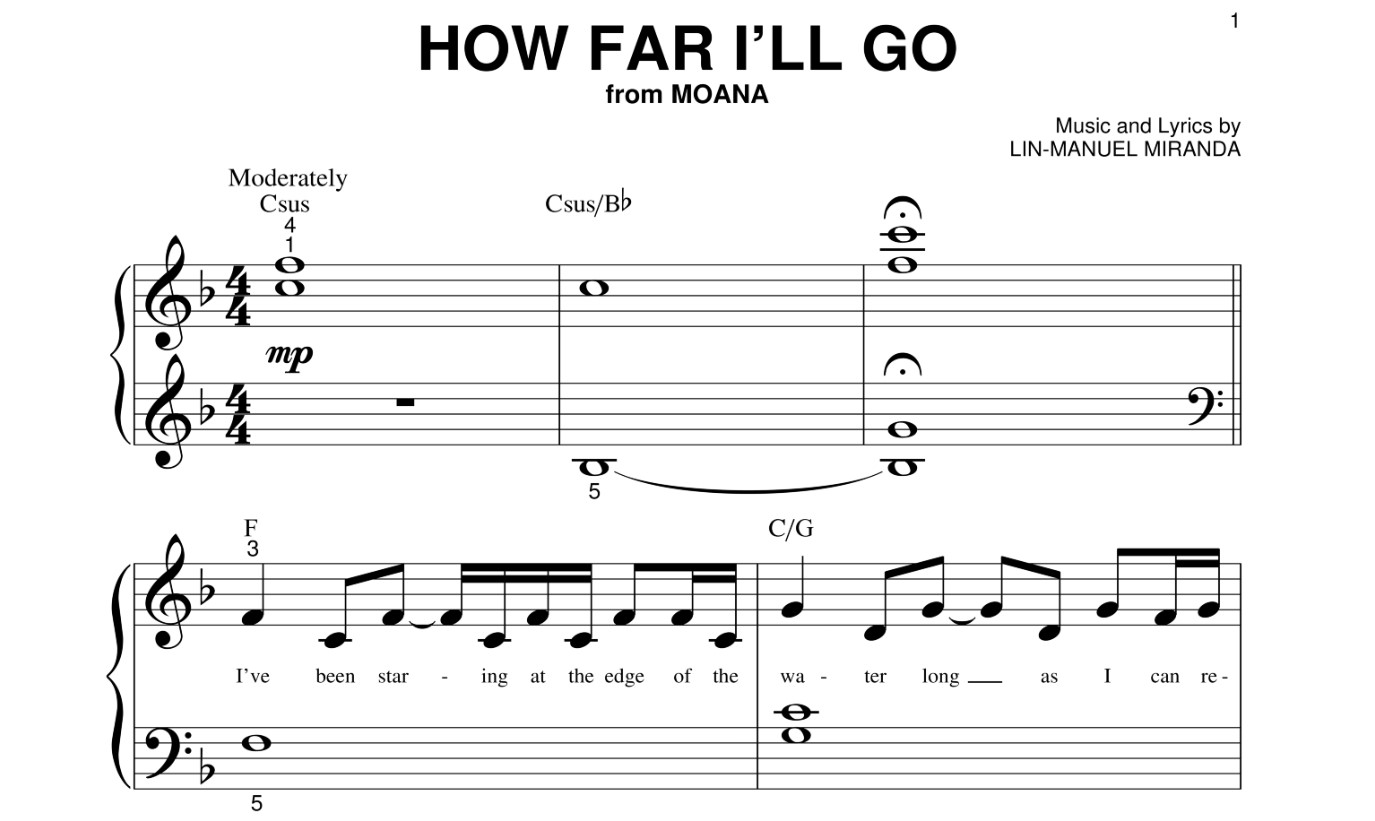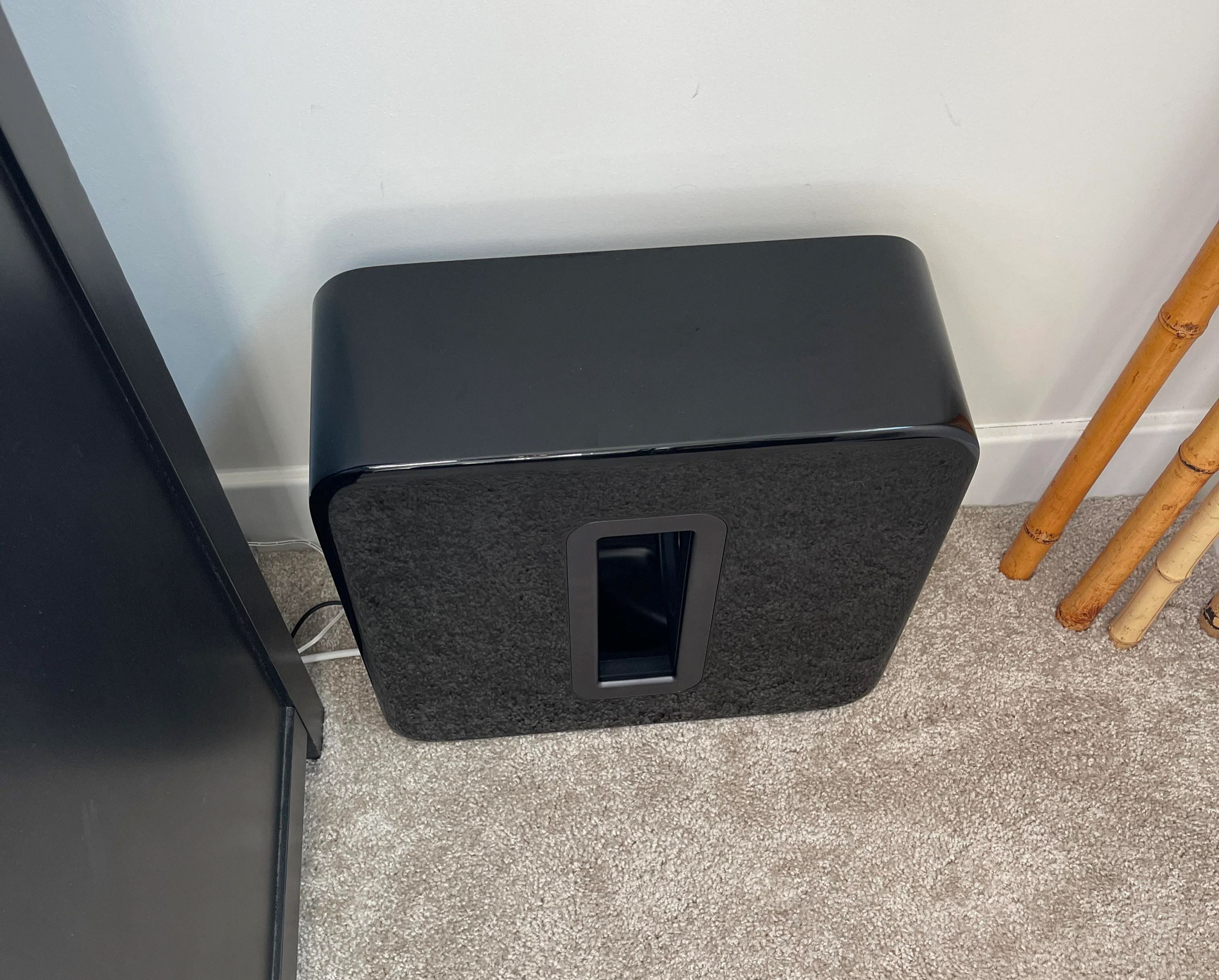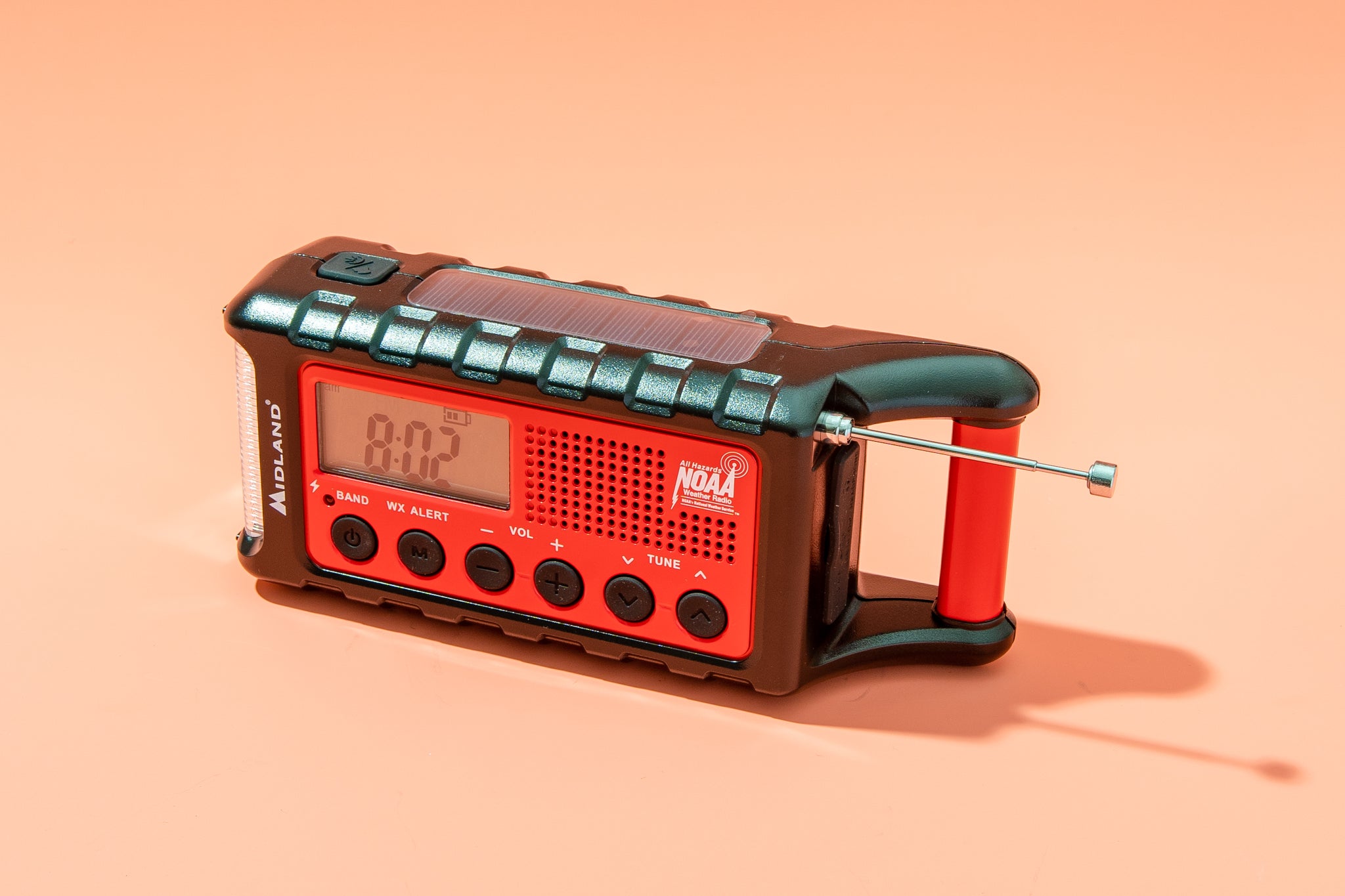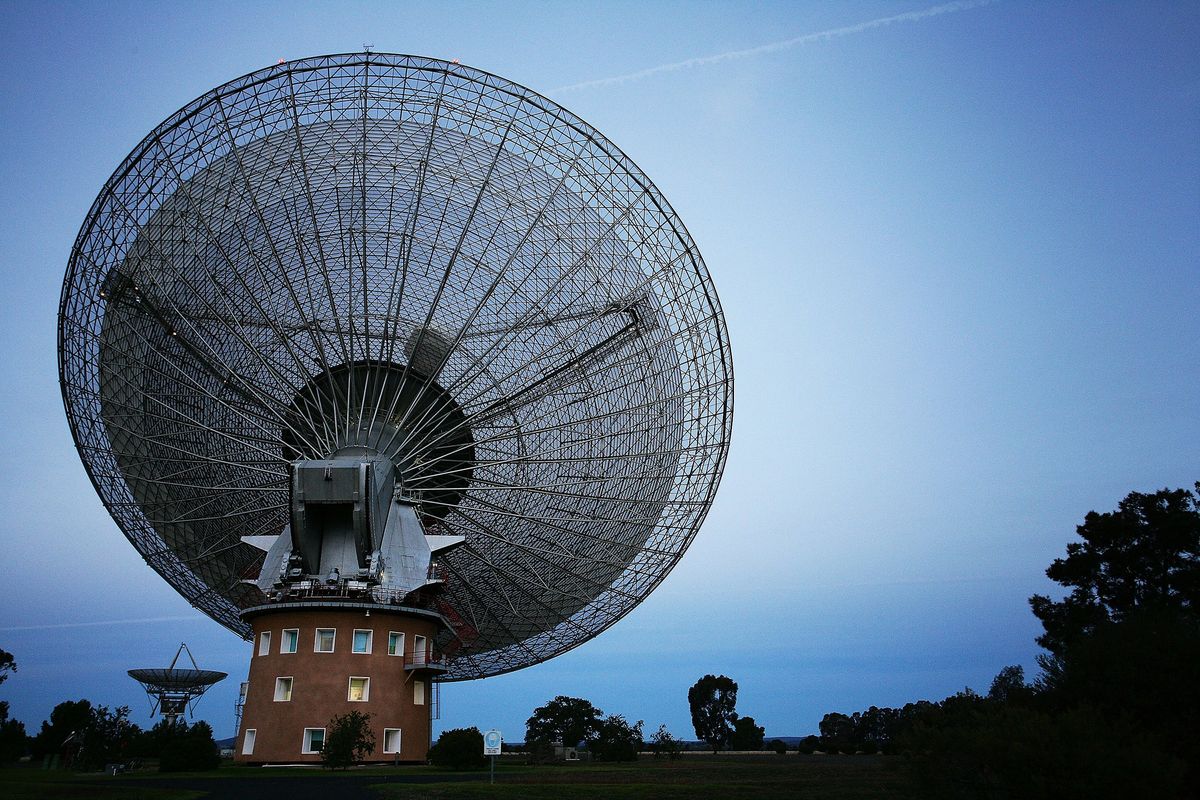Home>Devices & Equipment>Radio>How Far Can Ham Radio Reach


Radio
How Far Can Ham Radio Reach
Modified: January 22, 2024
Discover the power and reach of ham radio as we explore how far radio signals can travel. Learn about the fascinating world of amateur radio enthusiasts and their long-distance communications.
(Many of the links in this article redirect to a specific reviewed product. Your purchase of these products through affiliate links helps to generate commission for AudioLover.com, at no extra cost. Learn more)
Table of Contents
Introduction
Welcome to the fascinating world of ham radio! In an era of smartphones and instant communication, ham radio, also known as amateur radio, may seem like an outdated hobby. However, it continues to thrive as a vibrant community of radio enthusiasts who love exploring the vast possibilities of wireless communication. But what exactly is ham radio?
Ham radio is a popular hobby that allows individuals to communicate with others around the world using radio waves. Unlike commercial radio services, ham radio operators build and operate their own radio stations, experimenting with antennas, radios, and various operating techniques.
What sets ham radio apart from other forms of communication is its ability to reach much further distances. While mobile phones and walkie-talkies have limited ranges, ham radios can achieve remarkable distances, making them an essential communication tool in times of emergencies or natural disasters.
Furthermore, ham radio provides a unique way to connect with people across borders and cultures, fostering international friendships and a sense of global community. It is a hobby that combines technical knowledge, interpersonal skills, and a passion for exploration.
In this article, we will explore the factors that determine the range of ham radio signals. We will discuss the basics of ham radio operation, including the role of line of sight, antennas, and power output, as well as the impact of atmospheric conditions and the use of repeaters and relay stations. By understanding these factors, you will have a clearer understanding of how far ham radio signals can reach and the important considerations that come into play.
Whether you are a seasoned ham radio operator or a curious newcomer, join us on this journey as we delve into the depths of ham radio range and uncover the secrets behind its remarkable reach.
What is Ham Radio?
Ham radio, also known as amateur radio, is a hobby that allows individuals to communicate with each other using radio waves. But it goes beyond simple communication; it is a gateway to exploration, innovation, and community building.
Unlike conventional radio services, ham radio operators have the freedom to build and design their own radio stations. They have the opportunity to experiment with antennas, radios, and different operating techniques to enhance their communication capabilities.
Amateur radio operators, commonly referred to as “hams,” use assigned frequencies across a wide range of radio bands. These frequencies are allocated specifically for amateur use, ensuring that ham radio operations do not interfere with other public or private radio services.
One of the key aspects that sets ham radio apart is its global reach. With the right equipment and conditions, hams can communicate with other operators from all corners of the world, creating connections that transcend geographical boundaries.
Ham radio operators form a unique and diverse community of individuals with a shared passion. They come from all walks of life, including students, engineers, doctors, and retirees, united by their love for radio communication.
Ham radio also serves as a crucial resource during emergencies and disaster situations. When other communication channels may fail, ham radio operators can step in and provide vital information, assisting emergency services and connecting people in need.
Besides the practical aspect of communication, ham radio allows for the exploration of new technologies and techniques. From designing innovative antennas to experimenting with digital modes and satellite communication, hams are constantly pushing the boundaries of what is possible in the world of radio.
Additionally, ham radio provides a platform for learning and personal growth. Aspiring operators are required to obtain a license, which involves studying technical concepts, regulations, and operating procedures. This knowledge not only enhances their radio skills but also fosters an understanding of electromagnetic principles and radio propagation.
In summary, ham radio is a captivating hobby that combines technical expertise, global communication, emergency readiness, innovation, and personal growth. It is a gateway to exploration and a means to connect with people around the world. Whether you are interested in radio technology, community building, or simply seeking a new adventure, ham radio offers a rich and exciting experience.
The Basics of Ham Radio Operation
Operating a ham radio involves several essential components and techniques that enable successful communication. Understanding these basics is crucial for anyone interested in becoming a ham radio operator.
To begin, every amateur radio operator requires a transceiver, a device that both transmits and receives radio signals. A transceiver allows operators to tune in to specific frequencies and communicate with other ham radio operators.
Amateur radio operators have access to a wide range of frequencies across multiple bands, depending on their license class. The most commonly used bands are the High Frequency (HF) bands, which allow for long-distance communication, and the Very High Frequency (VHF) and Ultra High Frequency (UHF) bands, which are more suited for local communication.
When operating a ham radio, it is important to follow established protocols and procedures. Q signals, which are three-letter codes used for brevity and clarity during radio communication, are commonly used by ham operators. For example, “QTH” stands for location, “QSL” indicates a confirmation of a contact, and “QRZ” is used to request the identity of a particular station.
Amateur radio operators also utilize various operating modes to communicate. The most common mode in use today is Single Sideband (SSB), which allows for voice communication. Other modes include Morse code (CW), digital modes like Amateur Radio Digital Communication (ARDC), and even television transmission (ATV).
When it comes to making contacts, ham operators often participate in contests, on-air events where they aim to make as many contacts as possible within a specified time frame. Contests are an excellent opportunity to test one’s skills, reach new locations, and engage with fellow radio enthusiasts.
An important aspect of ham radio operation is understanding and respecting band plans. Band plans allocate specific frequencies to different modes of operation, ensuring organized and interference-free communication. By adhering to the band plan, operators can avoid congestion and maintain efficient use of the available spectrum.
Furthermore, ham operators should be aware of and comply with applicable regulations and licensing requirements in their respective countries. Obtaining an amateur radio license involves demonstrating knowledge of radio theory, operation procedures, and regulatory requirements.
Lastly, continuous learning and improvement are essential in the world of ham radio. Operators are encouraged to stay updated with advances in technology, explore new modes of operation, and expand their knowledge of radio propagation and antenna theory.
By mastering the basics of ham radio operation, aspiring operators can confidently participate in global communication, contribute to emergency preparedness, and engage in the vibrant ham radio community.
Factors Affecting the Range of Ham Radio
The range of ham radio, or the distance it can cover, is influenced by various factors that impact the propagation of radio waves. Understanding these factors is crucial for ham radio operators to optimize their communication and establish reliable connections. Let’s explore the key factors that affect the range of ham radio signals.
Frequency: The frequency at which ham operators communicate plays a significant role in determining the range. Higher frequencies, such as those in the UHF and VHF bands, are more susceptible to obstacles and have a limited range compared to lower frequencies used in the HF bands.
Line of Sight and Obstacles: The presence of obstacles, such as buildings, mountains, or dense foliage, can obstruct radio waves and limit their propagation. Ham radio signals generally travel in a straight line, so having an unobstructed line of sight between transmitter and receiver is crucial for longer-range communication.
Antennas and Gain: The antenna used by ham operators greatly affects the range of their radio signals. Antennas with higher gain, which concentrate the radio energy in a specific direction, can extend the range by focusing the signal where it is needed. Choosing the right antenna type and properly positioning it can significantly enhance the range of ham radio.
Power Output and Signal Strength: The power output of a ham radio transmitter directly impacts the signal strength and range of communication. Higher power output generally results in stronger signals and longer range. However, it is important to note that doubling the power output does not necessarily double the range; instead, the increase in range is limited due to other factors influencing signal propagation.
Atmospheric Conditions and Propagation: Atmospheric conditions, such as temperature, weather, and solar activity, can affect radio wave propagation. For example, ionospheric layers in the atmosphere can reflect HF signals, allowing them to travel longer distances. Solar flares and geomagnetic storms can impact ionospheric conditions, affecting the range and quality of signals. Studying propagation conditions and utilizing tools like Propagation Prediction programs can help operators make the most of favorable conditions.
Repeaters and Relay Stations: Ham radio repeaters serve as relay stations that receive signals and retransmit them at higher power, extending the range of communication. These repeaters are strategically placed to cover larger areas and overcome the limitations of line of sight. Utilizing repeaters can significantly enhance the range of communication, particularly in areas with challenging terrain or limited infrastructure.
Radio Noise and Interference: The presence of radio noise and interference can impact the range and clarity of ham radio signals. External sources of interference, such as electrical devices, power lines, or other radio transmissions, can introduce noise into the signal, reducing its range. Minimizing interference and utilizing noise filters or signal processing techniques can help improve the range and quality of ham radio communication.
By considering and understanding these factors, ham radio operators can optimize their equipment, techniques, and operating conditions to achieve the maximum range and reliability in their communication. Whether it involves selecting the right frequency, utilizing effective antennas, or leveraging repeaters and favorable atmospheric conditions, these factors play a vital role in the successful operation of ham radio.
Line of Sight and Obstacles
Line of sight is a crucial factor in determining the range of ham radio signals. It refers to the unobstructed path between the transmitting and receiving antennas, allowing for direct communication without the need for signal reflection or refraction. Understanding the concept of line of sight and identifying potential obstacles is vital for optimizing the range of ham radio communication.
When radio waves encounter obstacles such as buildings, mountains, dense foliage, or even the curvature of the Earth, their propagation is hindered. These physical barriers can block, attenuate, or scatter radio waves, diminishing their strength and range. Consequently, the effective range of a ham radio transmission is limited by the height and density of these obstacles.
For example, in urban areas with tall buildings, the range of VHF and UHF signals may be restricted to a few miles, as the signals struggle to penetrate the structures. In contrast, HF signals can often overcome these obstacles due to their longer wavelengths and ability to bend around obstacles using diffraction.
Another crucial consideration is the Earth’s curvature, especially when operating on HF frequencies. As radio waves travel in a straight line, the curvature of the Earth eventually obstructs the line of sight beyond a certain distance. This is known as the radio horizon. However, utilizing higher altitude transmitting and receiving antennas can extend the radio horizon and increase the range of communication.
To overcome line of sight limitations, ham radio operators often employ techniques that focus or redirect the radio waves. One strategy is to position antennas at higher elevations, such as on towers, hills, or mountains, to achieve a clear line of sight over obstacles. This provides a better chance for longer-range communication by reducing the impact of obstructions.
Furthermore, utilizing directional antennas with higher gain, such as Yagi or directional beam antennas, allows for more focused transmission in a specific direction. This enables sharper and stronger signals while reducing the influence of obstacles.
It’s important to note that certain atmospheric conditions can also affect line of sight propagation. Moisture, precipitation, and atmospheric pollution can absorb or scatter radio waves, reducing their range and causing signal degradation. Understanding these factors and monitoring their impact can aid ham radio operators in optimizing their lines of sight.
Overall, line of sight is a critical factor in determining the reach of ham radio signals. By carefully considering potential obstacles, utilizing elevated antennas, and employing directional antennas, operators can effectively overcome limitations and maximize the range of their communication.
Antennas and Gain
Antennas play a crucial role in the performance and range of ham radio systems. They are the means by which radio signals are transmitted and received, making them a critical component for achieving long-range communication. Understanding different antenna types and their associated gain is essential for maximizing the reach of ham radio signals.
The design and characteristics of an antenna directly impact the efficiency and effectiveness of signal transmission. One of the primary factors to consider is antenna gain, which measures the ability of an antenna to concentrate radio energy in a specific direction. Antennas with higher gain can focus their signal strength in a narrower beam, resulting in increased range and improved signal quality.
There are various types of antennas commonly used in ham radio, each with its own advantages and characteristics. The choice of antenna largely depends on the operating frequency, available space, and intended use:
- Dipole Antennas: Dipole antennas consist of a conductive element split in the middle, with each half extending in opposite directions. They are easy to build and provide excellent performance on multiple bands.
- Yagi Antennas: Yagi antennas, also known as beam antennas, are highly directional and have significant gain. They consist of a driven element, reflector, and one or more directors. Yagi antennas are ideal for point-to-point communication and can be tuned for specific frequencies.
- Vertical Antennas: Vertical antennas are widely used for mobile and base station applications. They are omnidirectional, radiating the signal equally in all directions, making them suitable for local communication.
- Loop Antennas: Loop antennas, such as the magnetic loop or small transmitting loop (STL), are compact and efficient. They are often used in limited spaces or for portable operations.
- Wire Antennas: Wire antennas, such as the long-wire or random wire antennas, are versatile and can be strung between trees, buildings, or other supports. They offer excellent flexibility in different operating conditions.
Aside from antenna type, the location and orientation of the antenna are also crucial factors to consider. Placing the antenna as high as possible, such as on a tower or mast, can improve the line of sight and reduce obstructions. Additionally, minimizing interference from nearby objects or buildings is essential to ensure clear signal propagation.
It is important to note that antenna gain is typically stated in decibels (dB). Gain is measured relative to an isotropic radiator, which is an imaginary antenna that radiates equally in all directions. A positive dB gain indicates that an antenna is more efficient in a particular direction compared to an isotropic radiator.
When choosing an antenna, it is essential to strike a balance between gain, directionality, and practicality. Higher gain antennas may have a narrower beamwidth, requiring more precise alignment for effective communication. Additionally, antennas with higher gain tend to be larger in size, which may pose challenges in installation and portability.
By selecting the appropriate antenna type, considering gain characteristics, and optimizing the placement and orientation, ham radio operators can significantly enhance the range and performance of their radio systems. The combination of the right antenna and gain can unleash the full potential of ham radio, enabling long-range communication and exploration of the airwaves.
Power Output and Signal Strength
The power output of a ham radio transmitter directly impacts the signal strength and range of communication. When it comes to transmitting radio signals, the higher the power output, the stronger the signal and the potential for longer distance coverage. However, it is essential to understand the relationship between power output, signal strength, and the practical limitations of achieving extended range.
Power output is typically measured in watts (W) and is an indication of the amount of electrical power the transmitter generates. A higher power output results in a stronger electromagnetic field, which translates to a stronger signal reaching the receiving station.
It is important to note that doubling the power output does not equate to doubling the range. The increase in range is limited by various factors, including signal propagation characteristics, antenna efficiency, and environmental conditions.
Generally, increasing the power output provides a higher signal-to-noise ratio, which can improve overall signal quality. This is particularly beneficial when dealing with weak signal conditions or when trying to overcome interference. However, at a certain point, the returns of increasing power output are diminished, and other factors such as antenna gain and propagation become more significant.
While power output plays a role in signal strength, it is essential to operate within legal limits and consider the capabilities of your equipment. Ham radio operators must comply with the power regulations set by their country’s regulatory authority and their license class. Exceeding power limits not only violates regulations but can potentially cause interference and degrade the overall quality of radio communications.
In addition to power output, understanding how signal strength decays over distance is critical. Radio signals weaken as they propagate, primarily due to free space loss. Free space loss is the reduction in signal strength as the distance between the transmitter and receiver increases. This loss is proportional to the square of the distance, meaning that a signal becomes four times weaker when doubled the distance from the transmitter.
There are strategies to mitigate the impact of free space loss and improve signal strength. Using high-gain antennas, such as Yagi or directional beam antennas, can concentrate the transmitted energy in a specific direction, effectively increasing the signal strength in that direction.
Furthermore, employing repeaters or relay stations can extend the range of communication. Repeaters receive weak signals and retransmit them at higher power, often positioned strategically on high-elevation locations. Utilizing repeaters allows for increased range and improved signal quality, particularly in areas with obstructions or challenging terrain.
It’s important to remember that while power output is a contributing factor to signal strength and range, it is not the sole determinant. To achieve optimal communication range, ham radio operators should consider the interplay between power output, antenna gain, propagation conditions, and the effective use of repeaters or relay stations.
By balancing these factors and making informed choices, operators can optimize signal strength, maximize range, and establish reliable and efficient ham radio communication.
Atmospheric Conditions and Propagation
In the world of ham radio, atmospheric conditions play a significant role in the range and quality of signal propagation. By understanding the impact of these conditions and how radio waves interact with the atmosphere, ham radio operators can optimize their communication and make the most of prevailing conditions to achieve broader coverage.
One crucial atmospheric phenomenon in ham radio is ionospheric propagation. The ionosphere, a layer of charged particles in the Earth’s upper atmosphere, plays a vital role in reflecting and refracting radio waves. Ham radio operators often exploit this characteristic to achieve long-distance communication on the HF bands.
Several layers of the ionosphere, such as the D, E, and F layers, vary in height and ionization density, affecting the behavior of radio waves at different frequencies. During the day, ionization is stronger, resulting in higher absorption and attenuation of HF signals, limiting their range. However, during the night, ionization decreases, allowing for better ionospheric reflection and longer-range communication on the HF bands.
Besides ionospheric behavior, other atmospheric conditions can impact signal propagation. Here are some important factors to consider:
- Solar Activity: Solar flares, sunspots, and geomagnetic storms can influence ionospheric conditions, leading to enhanced or disrupted radio wave propagation. Solar activity levels are measured by indices such as the Solar Flux Index (SFI) and the Planetary K-index (K-index).
- Tropospheric Ducting: Tropospheric ducting occurs when variations in temperature and humidity create layers of different refractive indices. Radio waves can be trapped and travel for extended distances within these ducts, allowing for enhanced propagation beyond the normal line of sight.
- Atmospheric Noise: Natural and man-made sources of noise, such as lightning, electrical devices, or radio frequency interference, can increase the background noise level and affect signal quality. Monitoring and minimizing noise sources can improve communication reliability.
- Meteorological Phenomena: Weather conditions, such as rain, snow, fog, or even variations in air density, can impact signal propagation by scattering or absorbing radio waves. Paying attention to weather patterns and their impact on different frequencies can help operators adapt their communication strategy.
Understanding the prevailing atmospheric conditions and their impact on propagation is crucial for selecting appropriate frequencies and adjusting transmission techniques. Ham radio operators can utilize various tools and resources, including online propagation prediction programs, ionospheric maps, and real-time solar activity reports, to assess the current conditions and optimize their communication.
It’s important to note that while atmospheric conditions can influence propagation, they are not under the control of ham radio operators. However, by remaining vigilant and adaptable to changing conditions, operators can take advantage of favorable circumstances and adjust their operating techniques to overcome challenges.
By staying informed about ionospheric behavior, solar activity, and other atmospheric conditions, ham radio operators can make strategic decisions regarding frequency selection, antenna orientation, and power levels. This knowledge and adaptability empower operators to maximize the range, quality, and reliability of their ham radio communications.
Repeaters and Relay Stations
Repeaters and relay stations play a crucial role in extending the range and efficiency of ham radio communication. These dedicated stations receive incoming signals and retransmit them at higher power and sometimes on different frequencies, overcoming obstacles, improving signal quality, and expanding the reach of communications.
In ham radio terminology, a repeater is a combination of a receiver and transmitter that operates on the same frequency band. It is usually positioned at a high elevation, such as a mountaintop, tall building, or tower, to achieve an optimal line of sight and cover a wide area. Repeaters receive weak signals from a transmitting station and amplify them before broadcasting them to other receiving stations within their range.
Utilizing repeaters is particularly beneficial in areas with challenging terrain or dense urban environments. The line-of-sight limitations caused by buildings, hills, or other obstacles can be overcome by strategically placing repeaters in key locations, enabling communication over longer distances.
Repeaters are typically operated by ham radio clubs, organizations, or individuals, who generously maintain and manage them for the benefit of the ham radio community. They are equipped with antennas and high-power transmitters, allowing weak signals to be amplified and transmitted over a wider area.
When using a repeater, ham radio operators need to follow the specific operating procedures associated with that particular repeater. This includes using the correct transmit frequency, transmitting tone or code if required, and adhering to any protocol or regulations set by the repeater’s governing entity.
In addition to repeaters, relay stations can also extend the range of ham radio communication. A relay station acts as an intermediary between two or more stations that are unable to communicate directly due to geographic distance or obstacles. When a transmitting station sends a signal to the relay, it receives the signal and then retransmits it to the desired receiving station, effectively bridging the communication gap.
Relay stations can be useful in emergency situations where direct communication is not feasible or when trying to establish communications between stations in remote or isolated locations. They help overcome the limitations of line of sight and enable communication over extended ranges.
It is important for ham radio operators to be aware of the repeaters and relay stations available in their local area or within the range of their operations. They can consult online directories, regional ham radio clubs, or local repeater coordinators to obtain up-to-date information on available repeaters and their operating parameters.
When utilizing repeaters or relay stations, it is essential to use proper identification methods and adhere to established etiquette. Avoid tying up the system for extended periods, be mindful of sharing the repeater resources with others, and follow any specific instructions or guidelines provided by the repeater owner or operator.
By leveraging the power of repeaters and relay stations, ham radio operators can go beyond the limitations of their equipment and extend their communication range. These valuable resources enhance the effectiveness of ham radio operations, enabling communication over larger areas, fostering emergency preparedness, and strengthening the sense of community within the ham radio world.
Ham Radio License and Regulations
Operating a ham radio requires obtaining a ham radio license, which involves demonstrating knowledge of radio theory, operating procedures, and regulatory requirements. Licensing ensures that operators have the necessary understanding and skills to responsibly and effectively use radio frequencies allocated for amateur radio use.
The process of obtaining a ham radio license may vary depending on the country, as regulations differ across international boundaries. Different license classes may exist, each granting operators different privileges and frequency allocations.
Before applying for a license, aspiring ham radio operators typically have to study and pass an examination. The examination covers a range of topics, including radio wave propagation, electrical principles, radio regulations, operating practices, and basic electronics. Some countries also require operators to demonstrate proficiency in Morse code.
Once a license is obtained, operators are assigned a call sign, a unique combination of letters and numbers that identifies them on the airwaves. The call sign reflects the operator’s licensing authority and often contains hints about the operator’s location.
Ham radio operators are responsible for complying with applicable regulations and license requirements. These regulations typically outline restrictions on operating frequencies, power limits, band usage, technical standards, and prohibitions on interfering with other radio services.
Operators must also adhere to established operating procedures and etiquette, promoting respectful and efficient communication. This includes properly identifying oneself and the station, using appropriate language and procedure words, and extending courtesy to other operators on the airwaves.
In addition to general regulations, specific regulations may apply to the use of repeaters, satellite communications, special event stations, or contests. Ham radio operators should familiarize themselves with these regulations to ensure compliance and responsible operation.
License renewal is another aspect of ham radio regulations. Licenses are typically valid for a specific duration, often ranging from a few years to a lifetime. Operators must ensure they renew their license within the designated time frame to maintain legality and the privileges granted to their license class.
Harmonizing with an ever-evolving radio landscape, regulatory bodies continually update regulations and licensing requirements. Ham radio operators must stay informed about any changes or updates to ensure ongoing compliance and to make the most of their operating privileges.
Compliance with regulations not only ensures legal operation but also fosters a positive image for the ham radio community. By adhering to licensing requirements and operating within the established regulations, ham radio operators contribute to the responsible and efficient utilization of radio spectrum, while maintaining the integrity and spirit of amateur radio.
As the regulatory landscape may differ from one country to another, it is recommended for operators to consult their local regulatory authority or ham radio organizations to obtain specific information related to licensing and regulations in their jurisdiction.
Conclusion
Ham radio is a captivating hobby that combines technical expertise, global communication, and a strong sense of community. Its ability to reach remarkable distances and connect people from around the world is truly astounding. Understanding the factors that affect the range of ham radio signals empowers operators to optimize their communication and maximize the potential of this incredible hobby.
From line of sight and obstacles to antennas and gain, each element plays a critical role in extending the range of ham radio. By strategically positioning antennas, utilizing higher gain options, and considering atmospheric conditions, operators can overcome obstacles and achieve longer-range communication.
Incorporating repeaters and relay stations into one’s communication strategy can dramatically enhance the range and efficiency of ham radio systems. These dedicated stations serve as amplifiers and bridge communication gaps caused by line of sight limitations, steep terrain, or dense urban environments.
Furthermore, the knowledge and adherence to licensing and regulatory requirements ensure responsible operation and effective utilization of radio spectrum. Obtaining a ham radio license demonstrates proficiency and understanding of operating procedures and regulations, contributing to the overall integrity of the amateur radio community.
Ham radio provides an incredible opportunity to explore the world of wireless communication, connect with people across continents, and contribute to emergency communication efforts. It is a hobby that fosters curiosity, innovation, and a lifelong love for radio technology.
As technology advances and new possibilities emerge, ham radio continues to evolve. By staying informed, adapting to changing atmospheric conditions, and embracing new technologies, ham radio operators can unlock the full potential of their equipment and enjoy the endless possibilities of the airwaves.
Whether you are an experienced ham radio operator or someone considering delving into this captivating world, one thing is clear: ham radio is here to stay. It is a hobby that offers fantastic opportunities for learning, personal growth, and global connectivity. So, grab your transceiver, raise your antenna, and prepare to embark on an extraordinary journey through the boundless realm of ham radio.











